Sometimes bees don’t live in a man-made hive or a tree. Sometimes they take up residence in a structure like a house, church or apartment. Sometimes that’s not a bad thing and the humans and the bees can live together in harmony. But sometimes, the bees pick a location that is not where a human wants them and at that point, the best thing to do is hire someone to remove the bees from the structure, aka a structural removal. Yesterday, I helped someone remove bees from a structure – in particular an apartment building. I’ve always wanted to help out on one and someone I know does this for a living. Chad Street owns Bees & Trees – a Honey Bee and Arboricultural Service company. His wife and I work together on the People and Pollinators Action Network (PPAN) – educating the public about pollinators and working with local governments to adopt pollinator friendly practices to maintain their properties. I told her I’d be glad to help Chad out any time he needs it and he took me up on my offer.
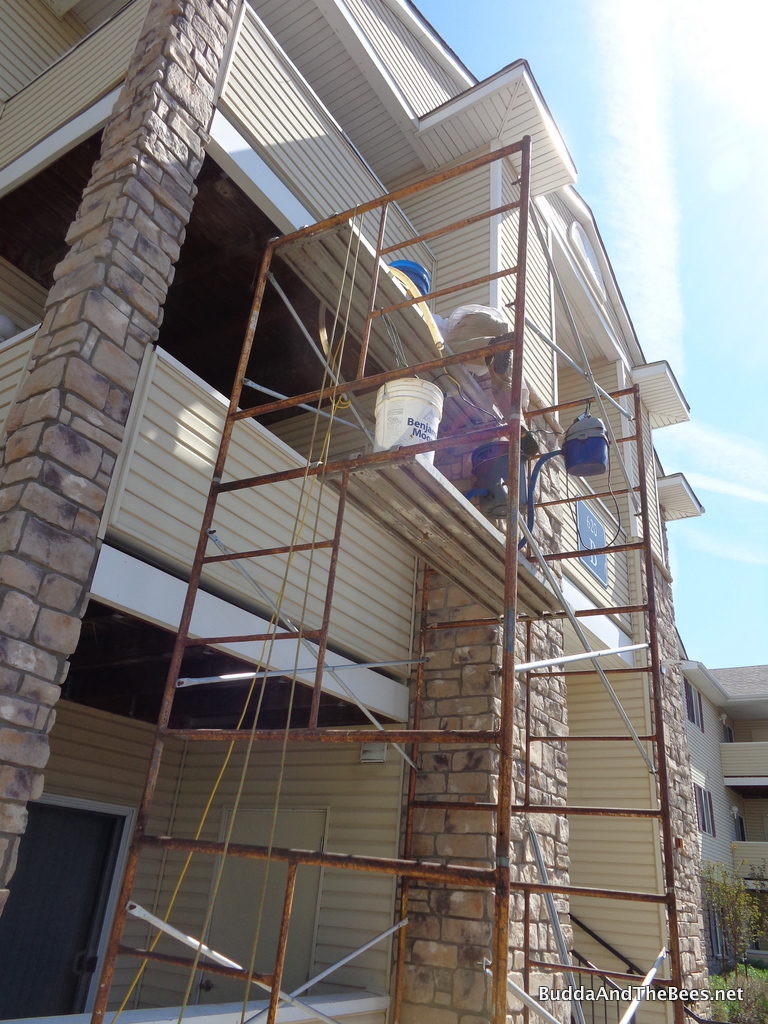
The bees in this case were in the 3rd story of a large apartment complex and had been there for about 4 years. Chad had trouble connecting with the tenant in the particular apartment who had requested the removal – she seemed to never be home when he’d stop by. Turns out she works early morning shifts which explains her absence in the mornings. So, last week after unsuccessfully contacting her, we started early and set up scaffolding to do the extraction from the outside of the building instead of her balcony where the bees were going in and out. Fortunately, my fear of heights wasn’t a problem. My dad always told me the fall never killed anyone. It’s just the sudden stop at the bottom.
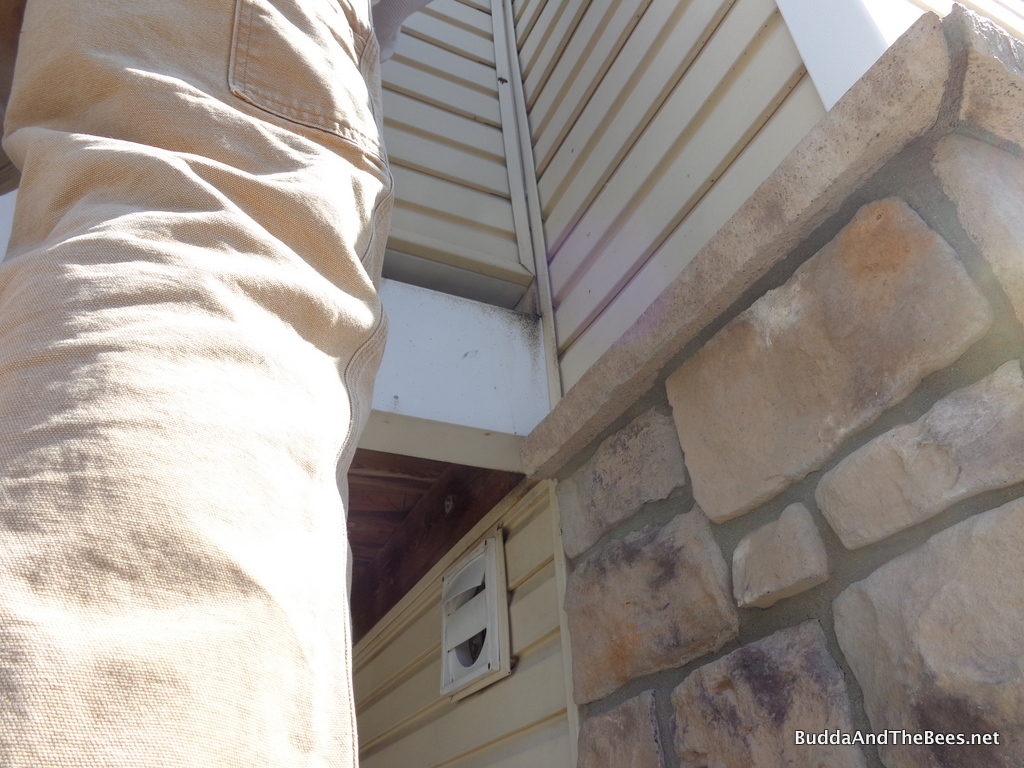
Once we got the scaffolding up, Chad started assessing where the hive might be in the wall. We could see where the bees were going in and out. He had a thermal gun which gave some idea where the bees were clustered, but not a complete picture. He cut through the exterior wall and found the hive in between the floor of the 3rd story balcony closet and the closet of the second story apartment.
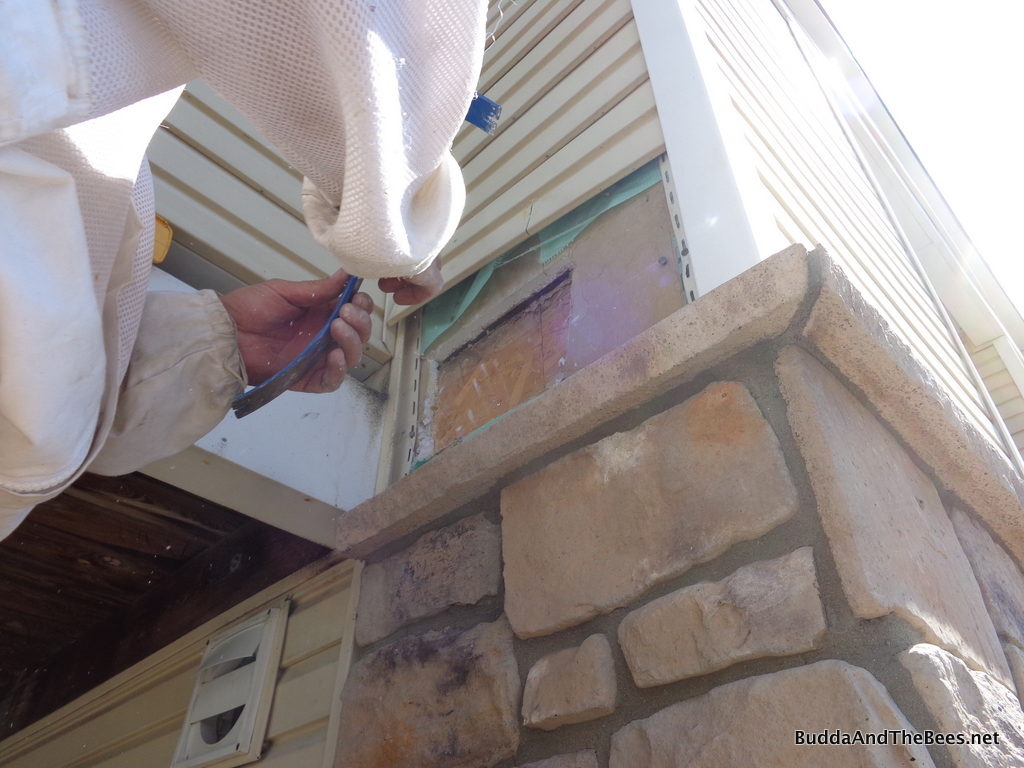
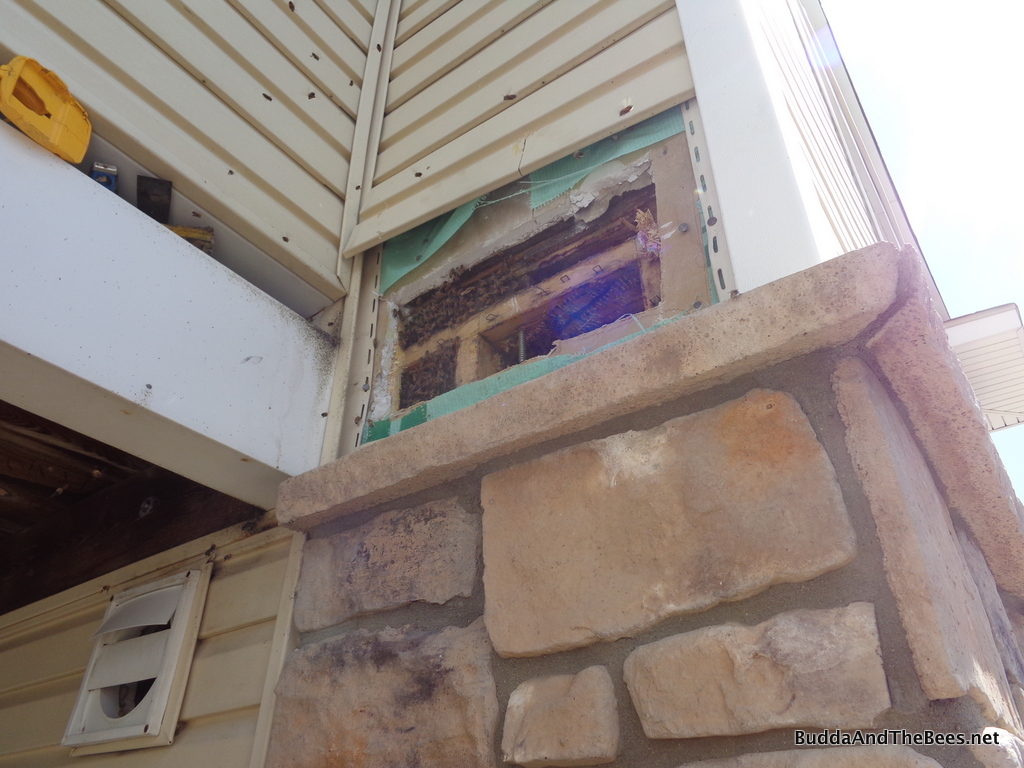
Unfortunately, there was a lot of infrastructure there which made it impossible to be able to get the bees and comb out from that vantage. At about that time, the 3rd floor tenant came home and we found out about her work schedule. The best way to get the bees was to go through the floor of her balcony closet, but since we’d already spent the whole morning on this and it was getting hot and her closet was packed full of stuff, we decided to close up the outside and reschedule the removal for another time. We had a good idea of where the bees and combs were located relative to closet. Chad put back the siding to close the hole up.
Yesterday, we tried going in through the closet floor. Since Chad does this for a living, he has all the cool tools – sawzall, circular saw, bee vacuum – I was jealous. He used the sawzall to cut through the floor and pried up the floor. Turned out there were two layers to the floor, so after prying up the first cut, he had to cut through a second layer.
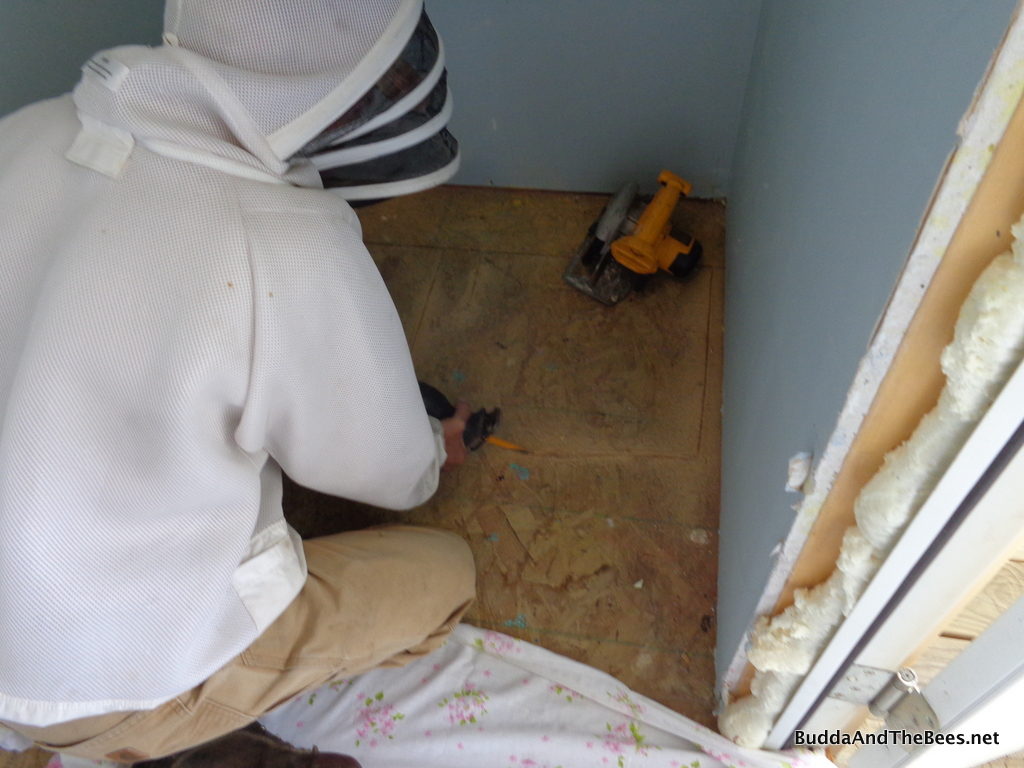
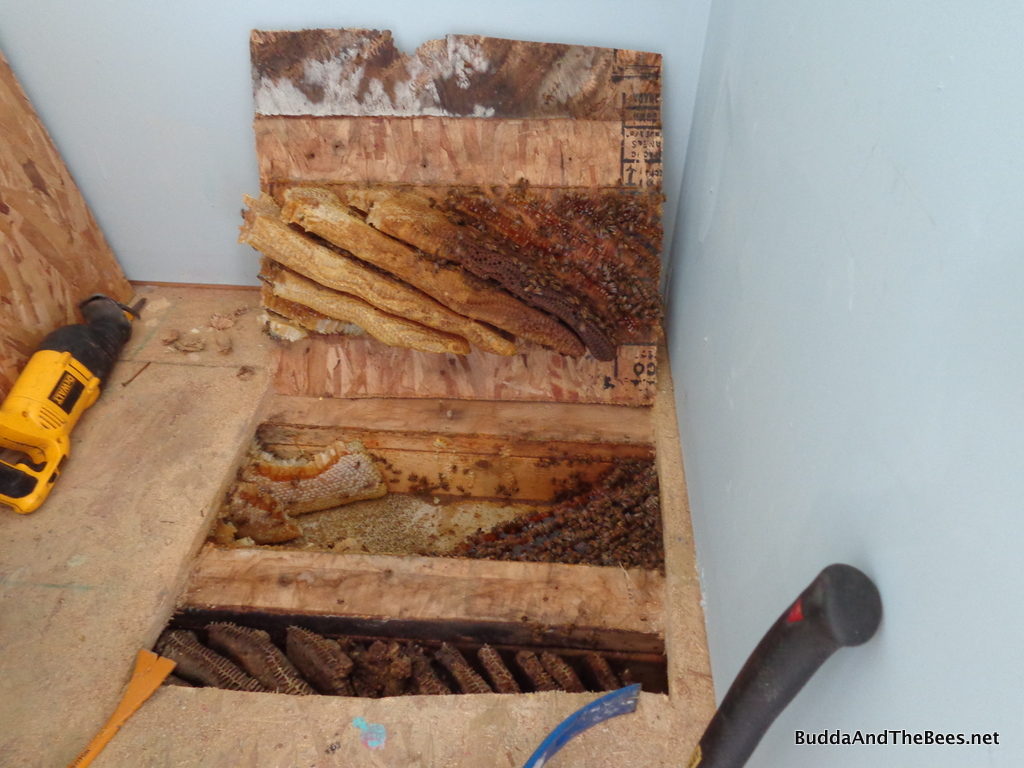
When he pried up the second layer, there was the hive. Fortunately, it was a cool day (mid 50’s when we were working) and the bees were pretty mellow even though their hive had just been exposed. I had visions of the bees pouring out of the floor and being trapped in the closet, buzzing in a cloud all around us. I wore my full bee suit with that in mind, but throughout the whole time, the bees mostly stayed on their combs, going about their business.
Chad found the queen on the first comb he pried off which was really lucky. Finding the queen in a hive like this could be like finding a needle in a haystack. She could scoot down in combs out of reach like the ones we saw from the outside. So finding her right away was great. He caught her in a queen clip for safe keeping.
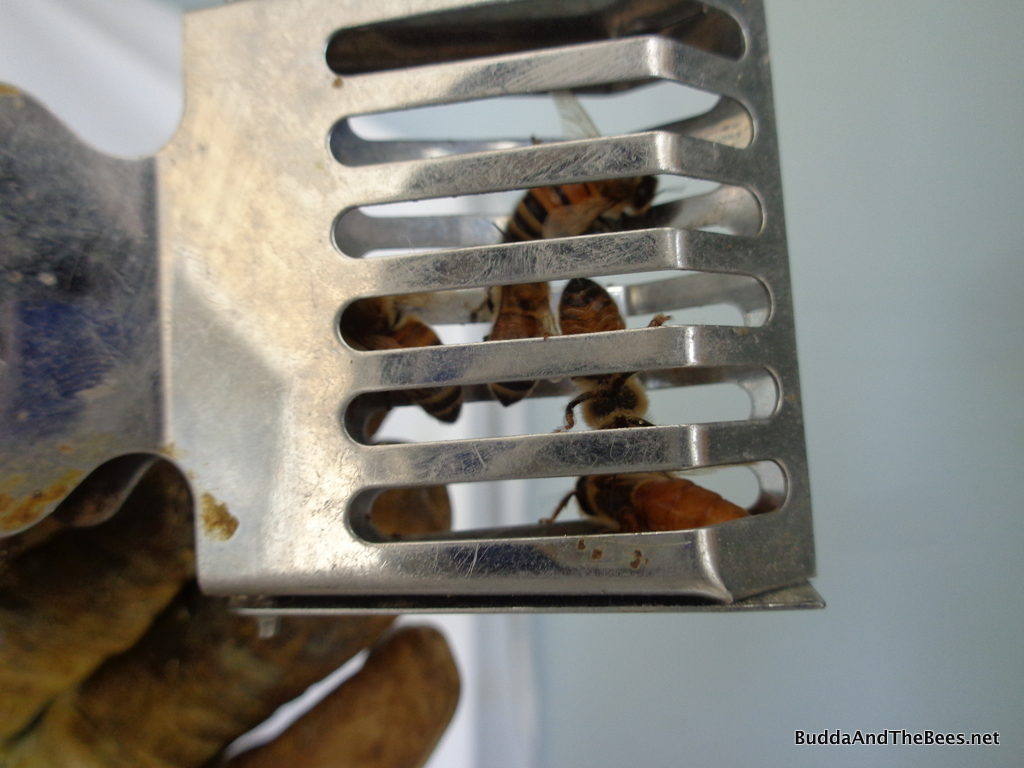
The rest of the time was spent cutting out comb and vacuuming bees. Chad did the cutting and I vacuumed the bees off the pieces. We divided the comb into three buckets – one for brood comb, one for honey comb and one for pieces that weren’t worth saving (these I’ll melt down and use for candles). We actually ended up with a 4th bucket of garbage comb. In the floor picture above, the combs near the bottom were all black and full of dead bees. Apparently the maintenance people were spraying Raid in the entrance hole and killed half of the hive. It’s a shame because so many bees died needlessly.
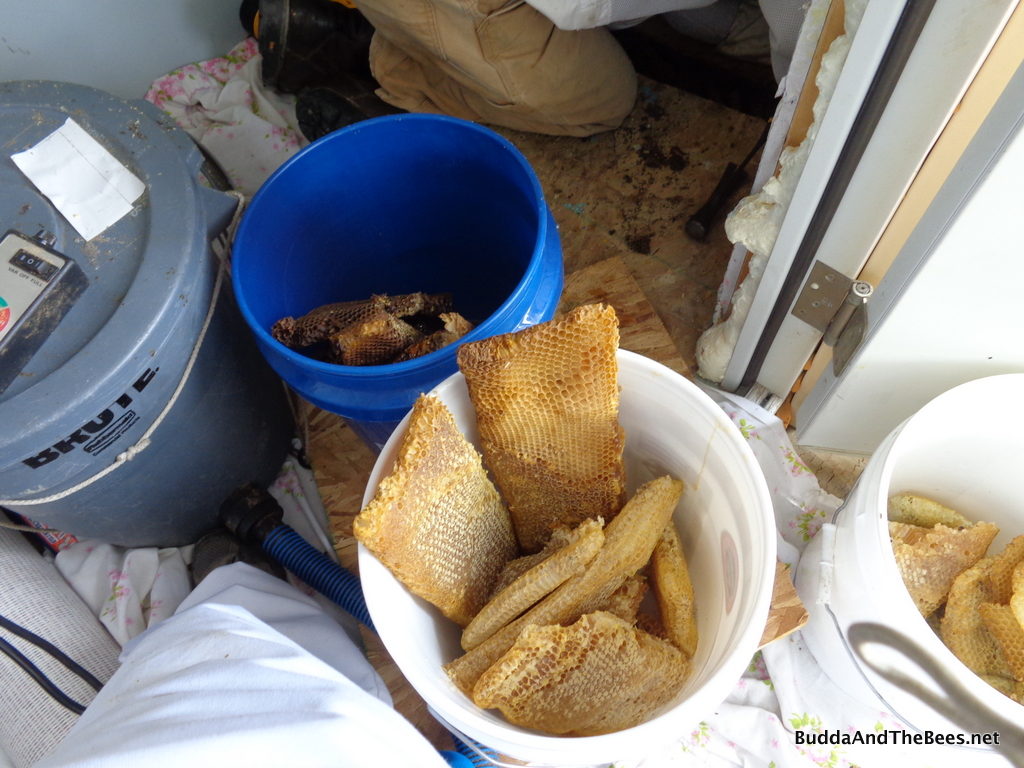
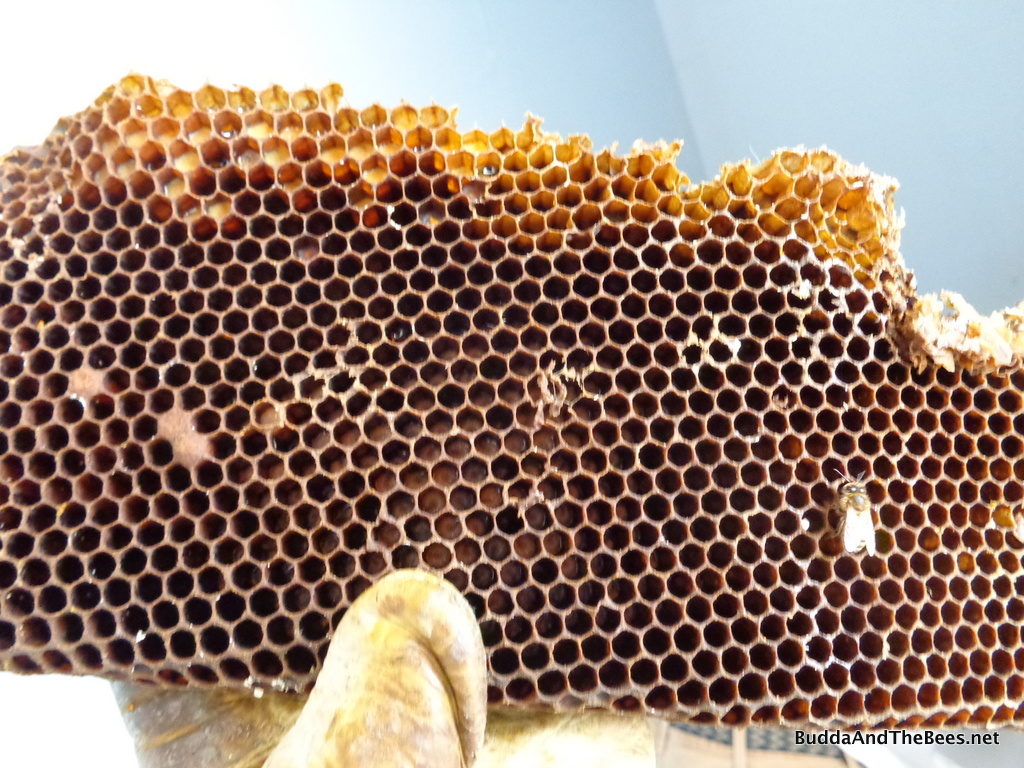
We were pretty much finished with the removal in 2 hours – way faster than I thought it would take. The next step was to take the combs and bees to a new location and set them up in a man made hive. Chad gave me these bees, so they became the new Left Hand hive. The space between the floors made the comb a perfect fit in medium Langstroth frames. I don’t have any pictures of the process, but basically you cut the comb to fit inside the frame and then use rubber bands to secure them in place. You set them up in the hive and then dump the bees in from the vacuum boxes. Over time, the bees will fill out the comb to attach it to the frames and eat through the rubber bands. We put some extra honey comb that was too wide for the frames above the frames in the top box so the bees can have some food for building new comb.
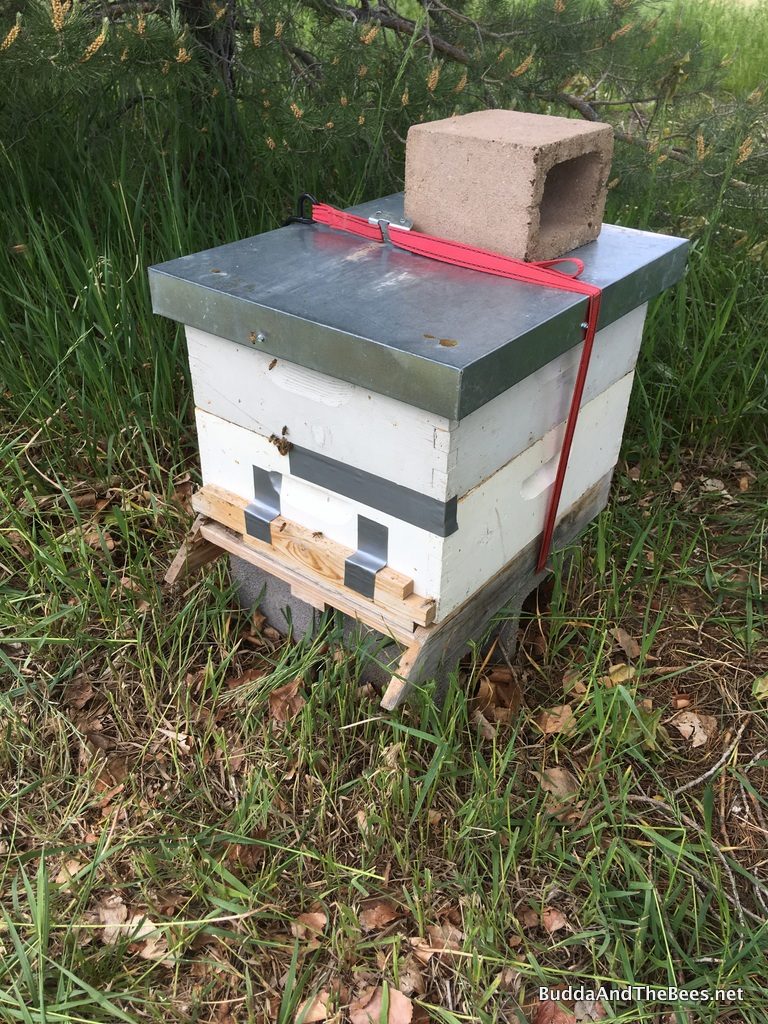
So now the bees have a new home out in the country where they can come and go without bothering humans. There is lots of pollen and nectar around right now for them to grow and thrive.
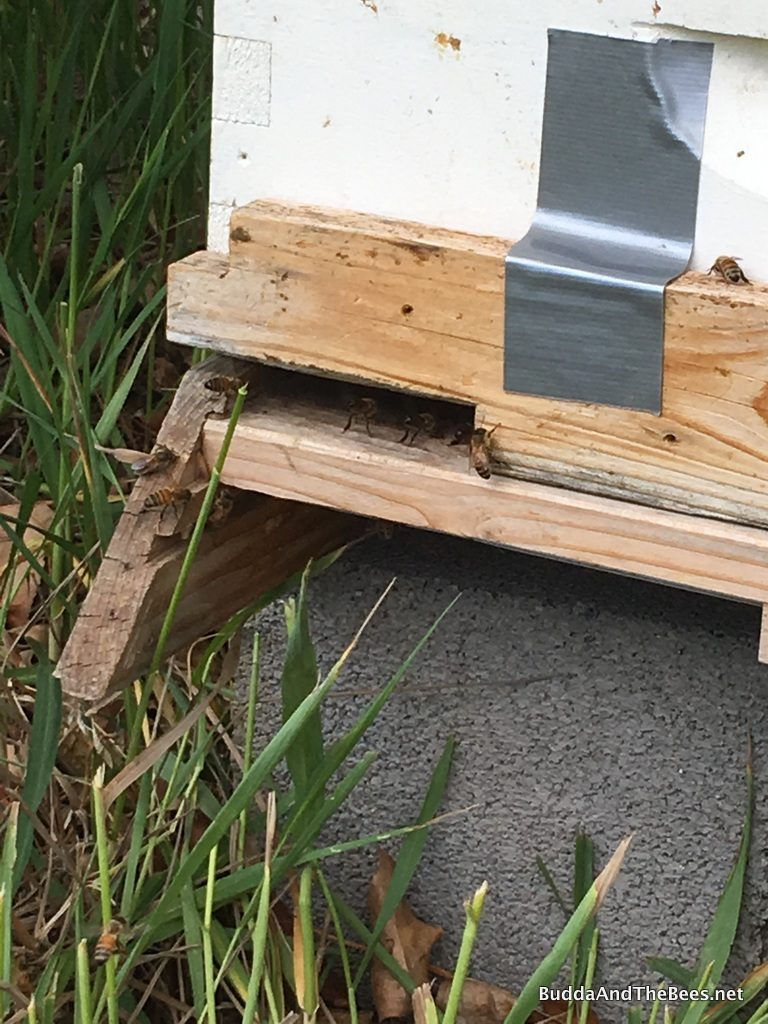
P.S. If you have bees living in your house, shed, barn, or whatever, unless they are a threat to you, consider letting them coexist with you in that space. If you want them removed, be sure to hire/pay someone who is licensed and insured to do the removal. Don’t spray insecticide and kill them or it may end up with it costing you a lot more. Bees keep their combs in good shape and if they all die, you may end up with honey dripping through your walls without them. Then, you have to pay for cleanup as well as extraction. If you are in the Longmont/Boulder area, consider hiring Bees & Trees for a removal or tree work. Chad’s a great guy to work with.



3 Comments
Julie · June 10, 2019 at 3:01 pm
Holy smokes! That’s soooooo cool!
Someone contacted me a couple days ago about a removal in the third story eave of a house, but I turned them down because of a lack of equipment and the height (actually that’s the main reason. The idea of both the potential fall and potential stop are too much for my cowardly heart. lol!)
You are so freaking boss! Congratulations on the new bees!
Holly · June 11, 2019 at 11:25 pm
The sudden stop at the bottom. O.M.G. too funny! But seriously, really great story. Looks like it was both educational and fun. Thanks for sharing!
Don · June 12, 2019 at 3:05 pm
He used to tell me that on the chairlift when I was a kid. It actually helped!